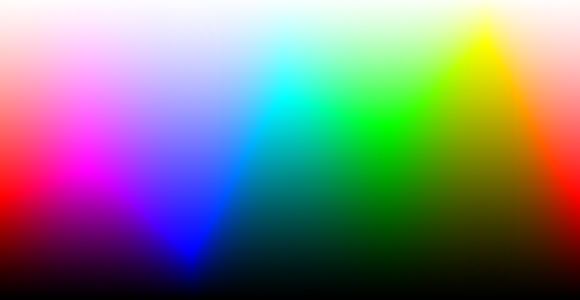It is quite scalar and Dikshitar uses these steps to construct a beautiful edifice. There are other versions that are also wonderful available commercially; Prof. S. Ramanathan's is highly recommended.
TMK has long insisted that scalar ragas do not provide the same scope for expansion as more traditional pre-scale ragas like kambhoji, bhairavi/mukhari or todi. The fact that prayogams from simhendra madhyamam can be transposed to shanmukhapriya and vice versa is, in his opinion, the reason that they do not provide the same effect on the performer/listener complex. Not that they don't have any unique aesthetics or intellectual appeal.
Interesting observations all..He stuck to mostly non-scalar ragas. I guess that is his thing which suited my tastes. One exception may be pADi, it sounded scalar to me but that may be due to my lack of familiarity with the raga.
1.Scaling the scalar
Doesn’t this beg the question of what makes a rAga scalar or the opposite [whatever that is?]. Is rAsali scalar? Is sarasvati scalar? What about bahudhAri and bindumAlini and ranjani?
If the answer is yes for all, or for any combination of these, then do well feel that they are all ‘scalar’ to the same degree?
I feel that scalarity or non scalarity isn’t an attribute of the rAga as much as it is a feature of one’s treatment of the rAga.
Isn’t the style of manOdharma music practiced by most musicians today, one wherein the mEla rAgas and rAgas like mohana and hindOLa are sung in a regimented way, without much thought to important vAdi samvAdi pairs, identification of important nyAsa swaras, or even in identifying and emphasizing particular sancAras which confer rakti – aesthetic and emotional character, which can help to formulate a definite swarUpa of the rAga?
I remember a saraswati I heard by the Hindustani Harmonium Ustad Ravindra Katoti, in the village of Harihar, Karnataka. His treatment of it was astounding, and surpasses all the sarasvatis I’ve ever heard. He expanded my perspective of the rAgas scope by an order of magnitude, by interpreting it in a very novel fashion, using sancAras like sn\rs , ssnsrsns, mpdn,nd and so on; which contemporary Carnatic artistes are unlikely to approve of.
2.Understanding the ‘other’
Are we treating the ‘more traditional pre-scale rAgas like kambhoji, bhairavi /mukhAri and thodi’ in a non-scalar way? Do our AlApa and swarakalpana treatments (and the notations/ pAThAntaras of the kRtis we sing) reflect this pre-scale nature of the rAgas?
I will use a different sample set – nAtakuranji, bEgaDa, pUrvakalyAni, anandabhairavi and sAranga. If we can label these too as ‘traditional pre-scale rAgas’; what is it that makes them so? What in the performative interpretation and treatment of these rAgas by current musicians warrants them being called non-scalar, or rakti rAgas or whatever other label we choose for them. If our interpretation of the ‘non-scalar’ rAga merely constitutes the set of all sancAras allowed by the scale plus a handful or ‘special’ or ‘archaic’ sancAras; this is a highly unsatisfactory way of defining scalar and non-scalar in my book.
In my understanding of the Indian music system, the very heart of the rAga lies in those particular vakras and varjyas and janTas and gamaka-intoned swara clusters, with various unique and sometimes shared/overlapping melodic sequences, all of which form a gestalt that is the rAga’s universe. However our modern education, with an emphasis on the positivist sciences, pressurizes us to form an idea of the rAga music system that is ‘logical’ or ‘scientific’.
Is it possible to revisit these views? Could they possibly be ill-formed? While it is somewhat true that the provisional scales of ragas help us to determine the ‘scope’ and the ‘scale of magnitude’ and ‘degree of scalarity’of a rAga, could there be something in our lenses and viewpoints that biases our response to this question?
3. Interrogating the question
The treatment of every single rAga – scalar or non-scalar, big rAga and small rAga, by S.Balachander and T.R.Mali and Voleti Venkateswarulu, has almost always been fresh, entirely consonant with (my understanding of) the raga lakSaNa; and has given an array of new sancAras, and shed light on contour and possibilities of the rAga. I choose to include Balachander since he performed the mElakarthas and the other 'traditional' ragas, with equal enthusiasm and frequencey and elaboration.
To a lesser extent, Balamuralikrishna, and Vasantakumari and Kalyanaraman have demsntrated original sancaras and scaled uncharted territories. The latter two were somewhat limited and restrained by their allegiance to the scale-dominated world-view of the rAgas.
The attitudes of artistes like Tiger Varadachariar, Smt. Brinda and Nagaswaram T.N.R. Pillai, which was yet another kind, needs a separate discussion. [and my limited understanding of Tiger’s attitude is entirely from a combination of hearsay and a study of his compositions and his pAThAntaras of certain songs]. Similarly, I have found SubbarAma diksitar's interpetation of every single rAga, barring none to be exceptionally sophisticated. Be it the sancAris or his own compositions, his elaborations always have embodied the complex, intricate treatment that carnatic music deserves - be it in HindoLa, hamsadhwani, amRtavarSini and mOhana, or be it Pharas,yamuna kalyAni and asAvEri. He again, deserves a dissertation length treatment.
So I return to the question, where does the scalarity abide? Is it inherent in the nature of the rAga – as it lives in the lakSaNa grantha and in the notations of songs, and in the shared intelligence of performers? Or it is a product of attitudes towards performance and interpretation of music?


